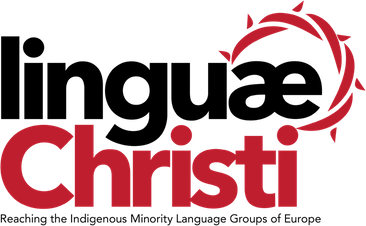The term that I’d like to address in this month’s Sprachspielen is “minority.” This is such an important term for us with so much nuance that it will definitely take more than one month to unpack it. I’ll try to get that process started with this instalment.
The word “minority” is not really an unusual or rare term in our daily vocabulary. In the political area, we are accustomed to a “majority” party and a “minority” party, and we know exactly what that means: one political party has more elected representatives and the other fewer. We’re also accustomed to hearing and using the term “minority” in the context of race, ethnicity or other demographic designations. Again, we would know what this means in relationship to the “majority,” i.e., the one group with the most people within it.

But, when we use the “term” minority in a linguistic or socio-linguistic context, what does the term mean? Especially, if we are looking at indigenous languages in the European context? A starting place for us is a document, which is a bit of a standard here in Europe. It is “The European Charter for Regional or Minority Languages,” or ECRML. This is a charter which originated in 1992 under the auspices of the Council of Europe in order to protect and promote the historic minority and regional languages within Europe, which are not necessarily represented in the form of a nation-state. Here is the opening, working definition from that Charter:
Article 1 – Definitions
For the purposes of this Charter:
a “regional or minority languages” means languages that are:
i traditionally used within a given territory of a State by nationals of that State who form a group numerically smaller than the rest of the State’s population; and
ii different from the official language(s) of that State;
it does not include either dialects of the official language(s) of the State or the languages of migrants;
b “territory in which the regional or minority language is used” means the geographical area in which the said language is the mode of expression of a number of people justifying the adoption of the various protective and promotional measures provided for in this Charter;
c “non-territorial languages” means languages used by nationals of the State which differ from the language or languages used by the rest of the State’s population but which, although traditionally used within the territory of the State, cannot be identified with a particular area thereof.
This is a pretty good starting place for us in our understanding of minority or regional languages within the European context, or more to the point our missions focus both in general but also more specifically. The list of languages that the Charter would identify as regional or minority languages conforms in the main to our own list of target language groups for our own purposes, which is the spreading of the Gospel among these people groups in their heart languages.

However, there are a number of languages not included in the Charter, which we would have on our lists, as well as a number that are included in the Charter, which would NOT be on our lists. One thing that makes the list of languages within the ECRML incomplete is the fact that only those minority/regional languages in those nations, which signed the Charter, are included. This does not even include all of the nations of the European Union. Consequently, there are a number of other minority languages in other countries, which did not sign this Charter, but these languages would be on our “radar screen,” so to speak.
In a future instalment of Sprachspielen, we’ll continue to look at this term “minority,” and I hope to address in more detail why we would include many more languages than in the ECRML, as well as the reasons for not including certain minority languages. But, this month’s contribution should give you a basic outline for the use of the term “minority” in a European context and in reference to indigenous languages, which is pretty much the same as our own working definition here at Linguæ Christi. More next month
Have you seen the full scope of the people groups we serve?
165+ people groups. 100+ million people.
We’re still working to provide basic information about all of the indigenous minority language groups of Europe, but we have some information posted now, especially where we’re actively working. Read more.

